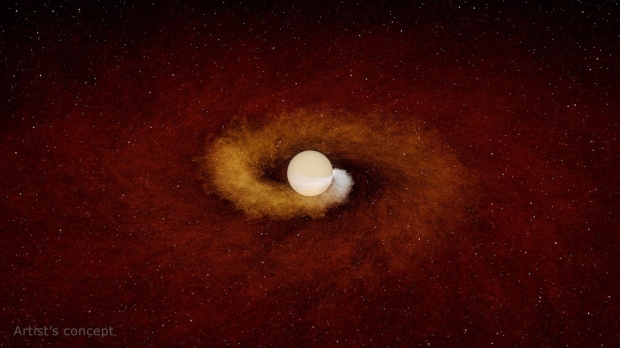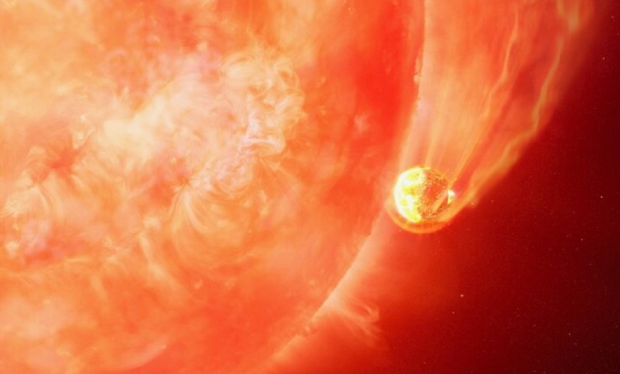A new study published in the peer-reviewed scientific journal Nature has detailed what is described as a very first observation of an aging star engulfing a planet.
NASA has taken to its blog to shine a light on the fascinating observation, which the researchers say is a glimpse into Earth's distant future as the same fate will befall our humble planet. According to the study, the star consumed the planet when it got close to its end of life, a stage in the star's life when its fuel begins to dwindle, and it grows in size, engulfing anything that gets too close. The planet was one of those unlucky objects, and as the star grew, its outer atmosphere surrounded the entire planet, causing the planet's orbit to shrink and eventually drop below the surface of the star.
When the planet sunk below the surface, it began to burn up like a meteor entering Earth's atmosphere. This energy exchange caused the star to grow in size and brightness temporarily. Researchers who observed the event reported the star becoming a few hundred times brighter before it returned to its normal size of brightness levels. Researchers used the Caltech-led Zwicky Transient Facility (ZTF) based at Palomar Observatory in Southern California and the NEOWISE observatory to observe the destruction of the planet.
"If I were an observer looking at the solar system 5 billion years from now, I might see the Sun brighten a little, but nothing as dramatic as this, even though it will be the exact same physics at work," said Kishalay De, an astronomer at the Massachusetts Institute of Technology in Cambridge and the study's lead author.
Notably, the researchers write that as the star began consuming the planet, hot gas was pulled from the surface of the star, a final effort from the planet to prevent its doom. This hot gas pulled from the star's surface by the planet was then hurled into space, where it cooled and became dust, similar to how water vapor becomes snow. As the planet continued to be engulfed, more dust was thrown out into space, which was what the aforementioned ground-based telescopes detected.

As previously stated, this cosmic event will be the fate of Earth as NASA writes on its blog that in approximately 5 billion years time, the Sun is expected to change into a red giant, significantly growing in size and consuming planets such as Mercury, Venus and possibly Earth as it grows. Astronomers believe that most mid-size stars become red giants, and every year there are planets consumed by stars reaching near their end of life.
"This discovery shows that it's worthwhile to take observations of the entire sky and archive them, because we don't yet know all of the interesting events we might be capturing. With the NEOWISE archive, we can look back in time. We can find hidden treasures or learn something about an object that no other observatory can tell us," said Joe Masiero, deputy principal investigator for NEOWISE at IPAC at Caltech.
Researchers named the event of the star consuming a planet ZTF SLRN-2020 and the data collected by observing this rare phenomenon will be used as a blueprint or template to identify more events like ZTF SLRN-2020.



